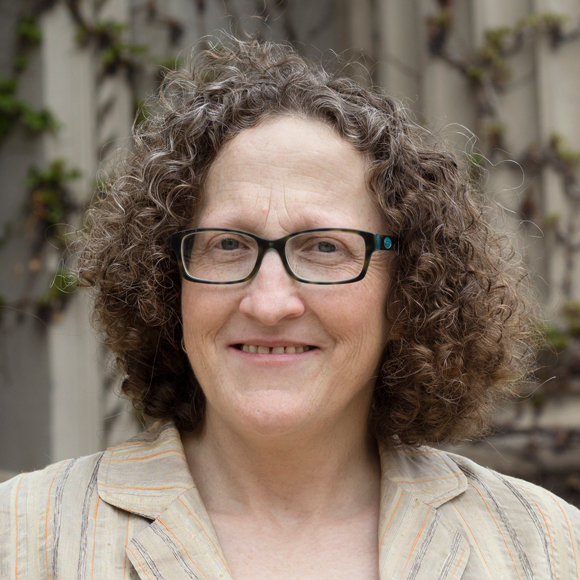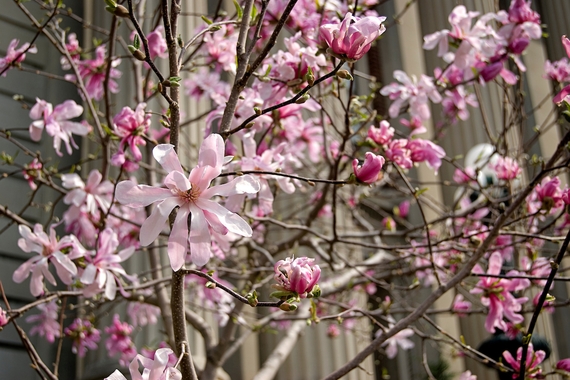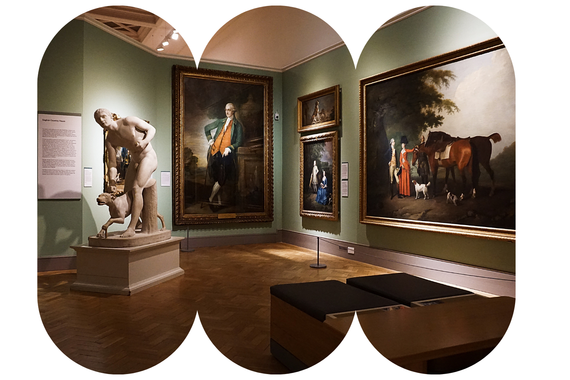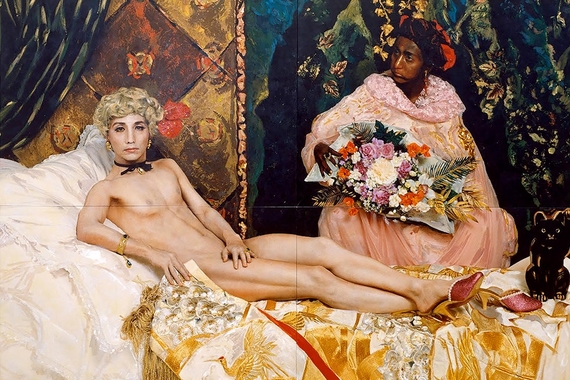Seeing the University From a New Angle
Jane Blocker has been with the University of Minnesota for 19 years. In that time, she has worn many hats within the art history department—faculty member, director of graduate studies, and chair. In August 2017 she took on a new role: that of Associate Dean for the Arts & Humanities in the College of Liberal Arts. After nearly a year on the job, she sat down with us to discuss how the experience has given her a new perspective on the University.

How did you become an associate dean?
Someone nominated me for the position and I was invited to apply. My first thought when I was asked was “No. Are you crazy? I would never do that.” But then I talked to two people who work here in Johnston Hall who have roots in Heller Hall: John McEwen—who is now my assistant—and Kathryn Louis, the dean’s chief of staff, each of whom has served in administrative roles in art history. They approached me and asked if I would reconsider accepting the position. They explained that there are some amazing staff members in this building and that people here are really devoted and dedicated. I thought it was worth having a conversation about it, and the rest is history.
I also think part of what directed me here was a desire to understand different aspects of the University, to see it from a different angle--and it has indeed proven to be very different. From this new position I have an even deeper admiration for the amazing research and teaching being done in my own department and across CLA, and I have an opportunity to advocate for the arts and humanities. It’s also a service thing; the University awards people for focusing on their own research, and that’s important—we want people to be good researchers. But I think at a certain point you have an obligation to move away from that and start thinking about the institution as a whole; about bringing other people up and removing obstacles from their intellectual or artistic path, and about the University as a community rather than just a place to focus on your own work.
In an interesting way, being an art historian has been good training for this role. Art history as a discipline trains us to think in both scholarly and creative ways, to be well versed in diverse research techniques and methods, theoretical approaches, and complex intellectual questions while at the same time understanding creative processes, visual languages, and the sheer beauty of human invention. As a historian of contemporary art, I have also had the special privilege of working closely with living artists. I am hopeful that this will help me to be a strong advocate for both the humanities and arts departments and to help build bridges between faculty who identify as researchers and those who think of themselves as makers.
What was it like to transition from department chair to associate dean?
My assistant, John, has been telling me for months that I’m “drinking from a firehose.” It has been a hard and humbling experience because I am in a job where I am keenly aware of my inexperience and lack of knowledge. There are so many rules and policies that I am just learning, and it’s being thrown at me very quickly. The learning curve is much steeper than when I took on the role of chair of the art history department. There, I already knew the structure of the department and how things worked.
As department chair, you have a bit more autonomy. Questions and problems come to you and you answer them and solve them. Most everything that happens at the dean’s level is more consultative. To make a decision, I have to speak to the correct people beforehand; there are very few decisions that I make in this role that I make all by myself. It’s great because it’s very collaborative, but it can also add layers of time.
As associate dean, what are some of your responsibilities?
I oversee the 18 academic departments that fall within the arts & humanities corridor and the Language Center. It’s been hard but it’s also exciting to learn about incredible things that faculty members are doing that I wouldn’t have been aware of in my former role.
I have a variety of responsibilities, some of which are routine (such as promotion and tenure reviews, hiring new faculty, and departmental planning and budgets), and some of which are unpredictable, such as the challenges faced by individual faculty members or department chairs. In a single week, I was consulted about conferring a posthumous honorary doctorate on Prince, hotel arrangements for undergraduate students in the marching band, and a conflict about intellectual property.
Those are the kinds of things that my work ranges from, but I would say most of the time I’m going back and forth to different meetings.
What do you hope to accomplish in your time as associate dean?
I joked with [Dean] John Coleman that my goal was to establish some goals, because for so far I’ve just been learning, learning, learning.
The dean has laid out a roadmap for the college, in which he has established four goals: advancement in readiness, research, diversity, and engagement. Each of the four associate deans has taken on a leadership role for one of those goals. I am working toward the goal of engagement with Amelious Whyte, CLA’s director of public engagement, and a few other people. We have run into some confusion about what “engagement” means, and that’s understandable since it involves everything from musical or theatrical performances for public schools and scholarly lectures at institutions outside of the University to working directly in and with local and regional communities to solve social problems and contributing time and money to charities or non-profit groups.
Our first job is to assess the level of engagement among our faculty and staff right now. To that end, we recently completed a detailed survey to glean information about who is involved in engagement projects, the nature of those projects, and the community partners with whom our people work. The second involves talking with our long-time partners to learn more about what we could do to increase engagement with them and others. And all of this will culminate in what we are calling an “engagement hub,” which will be part of the Pillsbury Hall renovation. We want the hub to be a place for members of the local community to interact and collaborate with people from the University community on humanities projects designed to advance the common good. We want to facilitate productive relationships with people from the Twin Cities, the State of Minnesota, and beyond.
On a day-to-day level, my goal is to be transparent, helpful, and collaborative. John McEwen told me that ninety percent of this job is moral compass. That’s the daily goal that everyone here has: to be as fair, equitable, transparent and helpful as possible.
This story was written by an undergraduate student account executive in CLAgency. Meet the team.



